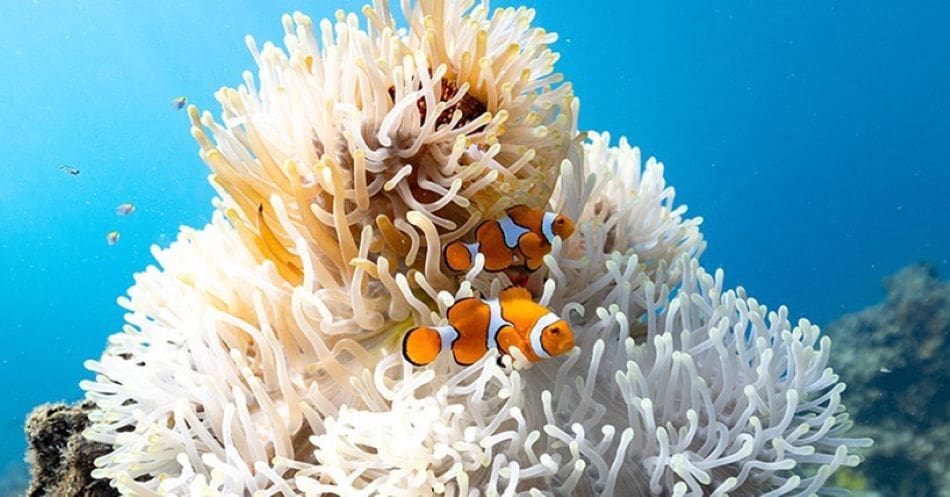Summary:
Clownfish have now revealed an extraordinary survival strategy: shrinking their own bodies to withstand extreme heat. A study published in Science Advances by researchers from Newcastle University, along with collaborators from the universities of Leeds and Boston and Mahonia Na Dari Conservation and Research Centre in Papua New Guinea, shows that clown anemonefish (Amphiprion percula) can become physically shorter during marine heatwaves.
Over a five-month period, scientists tracked 134 wild clownfish in Kimbe Bay, recording both their body lengths and the temperature around their anemone homes. During the heatwave, 100 of the fish shrank, with some individuals reducing their size in sync with their breeding partner. This coordinated shrinking was associated with up to a 78% increase in survival chances.
Lead author Melissa Versteeg said: “This is not just about getting skinnier under stressful conditions, these fish are actually getting shorter.” The team suggests that shrinking is both a response to heat stress and a mechanism for avoiding social conflict — especially important in clownfish societies, which are structured by size and rank.
This is the first evidence of body length reduction in coral reef fish under environmental and social pressure, raising new questions about how marine species may cope with climate change.

Shrinking Nemo: Clownfish survive heatwaves by shrinking
The fish, recognisable from the starring role in the film Finding Nemo, were studied by academics from the universities of Newcastle, Leeds and Boston, USA. The work was conducted in collaboration with Mahonia Na Dari Conservation and Research Centre, in Kimbe Bay, Papua New Guinea. The team measured the length of 134 clownfish every month for five months, and monitored the water temperature every 4-6 days, during a marine heatwave which are becoming increasingly common as a result of climate change.
They reveal the remarkable ability of clownfish to shrink, i.e. they can get shorter, in response to heat stress. Shrinking increased individuals’ chances of surviving the heat stress event by as much as 78%.
In a heart-warming discovery, they also show that coordination is important for clownfish, as they have a higher chance of surviving heatwaves when they shrink alongside their breeding partner. This is the first time that a coral reef fish has been shown to reduce the length of their body in response to environmental and social conditions.
Melissa Versteeg, a PhD researcher at Newcastle University’s School of Natural and Environmental Sciences led the study. Of this newly-discovered ability for the clownfish to shrink, she said: “This is not just about getting skinnier under stressful conditions, these fish are actually getting shorter. We don’t know yet exactly how they do it, but we do know that a few other animals can do this too. For example, marine iguanas can reabsorb some of their bone material to also shrink during times of environmental stress.
“We were so surprised to see shrinking in these fish that, to be sure, we measured each fish individual repeatedly over a period of five months. In the end, we discovered it was very common in this population. During our study, 100 fish shrank out of the 134 fish that we studied.”
“It was a surprise to see how rapidly clownfish can adapt to a changing environment and we witnessed how flexibly they regulated their size, as individuals and as breeding pairs, in response to heat stress as a successful technique to help them survive.”
The authors also highlight that individual shrinking might explain the rapidly declining size of fish in the world’s oceans.
Dr Theresa Rueger, Senior Lecturer in Tropical Marine Sciences and senior author of the study added: “Our findings show that individual fish can shrink in response to heat stress, which is further impacted by social conflict, and that shrinking can lead to improving their chances of survival. If individual shrinking were widespread and happening among different species of fish, it could provide a plausible alternative hypothesis for why the size many fish species is declining and further studies are needed in this area.”
Journal Reference:
Melissa A. Versteeg, Chancey MacDonald, Morgan F. Bennett-Smith, Peter M. Buston and Theresa Rueger, ‘Individual clown anemonefish shrink to survive heat stress and social conflict’, Science Advances 11, 21, eadt7079 (2025). DOI: 10.1126/sciadv.adt7079
Article Source:
Press Release/Material by Newcastle University
Featured image credit: Giorgia Doglioni | Unsplash




